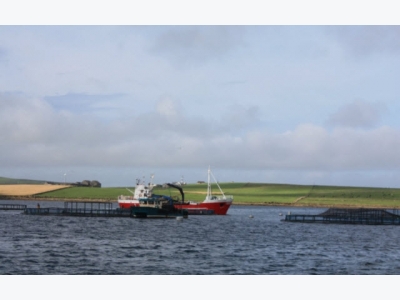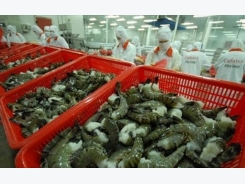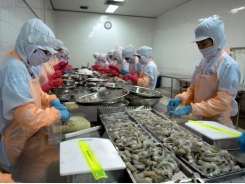Study could unlock fresh aquaculture capacity

A collaborative project to improve understanding of the effects of salmon farming on the seabed in high-energy waters is underway in Orkney.
Orkney has a number of sites which are subject to strong tides. © Rob Fletcher
The three-year project will help inform the environmental monitoring and management of more exposed sites along Scotland’s west coast and the Northern Isles and, potentially, unlock additional capacity. It is being co-funded by the Scottish Aquaculture Innovation Centre (SAIC) and sees Cooke Aquaculture Scotland partner with researchers from the Scottish Association for Marine Science (SAMS) and Dalhousie University in Nova Scotia.
Currently, the benthic impacts of salmon farming – the impact of fish waste or uneaten feed on the seabed – are monitored by industry regulator, the Scottish Environment Protection Agency (SEPA), using the DEPOMOD model developed by SAMS, which is based largely on data gathered from sheltered, in-shore sea lochs.
However, at more exposed sites – such as those found off the coast of Orkney and Shetland where this same waste matter is dispersed more widely by strong tides, and where the seabed is harder and rockier – the benthic impacts can differ significantly from those reflected in the current model.
“This shortfall in knowledge about dispersive sites is hampering both regulation and production,” says Chris Webb, Environment and Development Manager, at Cooke Aquaculture. “With better data about the benthic footprint at these sites, salmon producers like Cooke can improve environmental monitoring and compliance, and potentially increase production – both in terms of farming existing sites and developing new sites.”
The research team, led by SAMS, will field-sample and analyse data from up to three dispersive sites around Orkney over a complete production cycle. This data will then inform the development of the NewDEPOMOD model and its use in SEPA’s proposed Depositional Zone Regulation (DZR).
“With greater knowledge comes better regulation and better farming, and that’s what this project is all about,” comments Heather Jones, CEO at SAIC. “One of SAIC’s priorities is to unlock additional capacity for aquaculture development, and this project could do exactly that, by providing industry and regulators alike with the knowledge to manage and farm our seas ever more productively, and ever more sustainably.”
The total project value is £231,907, of which SAIC is contributing £90,460 (39%).
Có thể bạn quan tâm
Phần mềm

Phối trộn thức ăn chăn nuôi

Pha dung dịch thủy canh

Định mức cho tôm ăn

Phối trộn phân bón NPK

Xác định tỷ lệ tôm sống

Chuyển đổi đơn vị phân bón

Xác định công suất sục khí

Chuyển đổi đơn vị tôm

Tính diện tích nhà kính

Tính thể tích ao hồ



 Fishmeal-free info deemed misleading and misguided
Fishmeal-free info deemed misleading and misguided  China intensifies import of Vietnamese farm produce
China intensifies import of Vietnamese farm produce